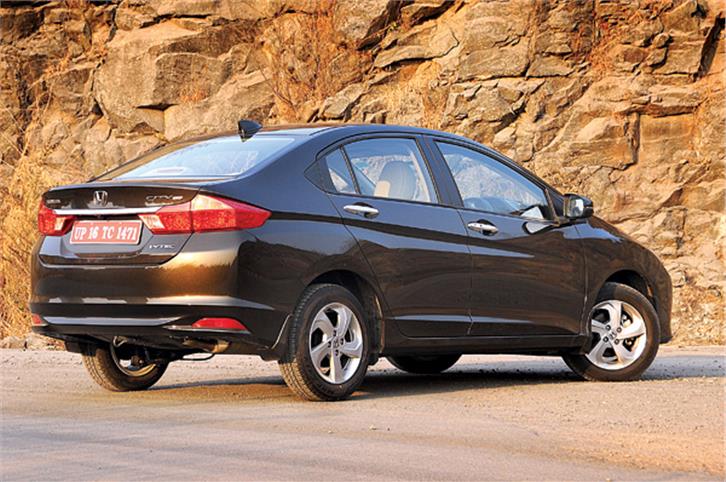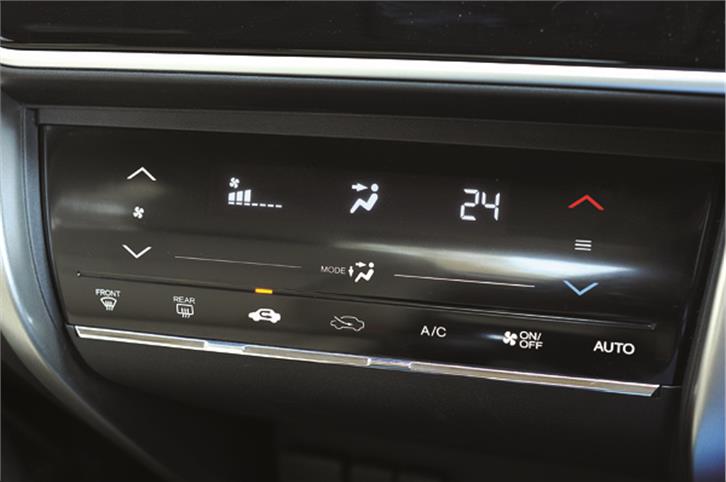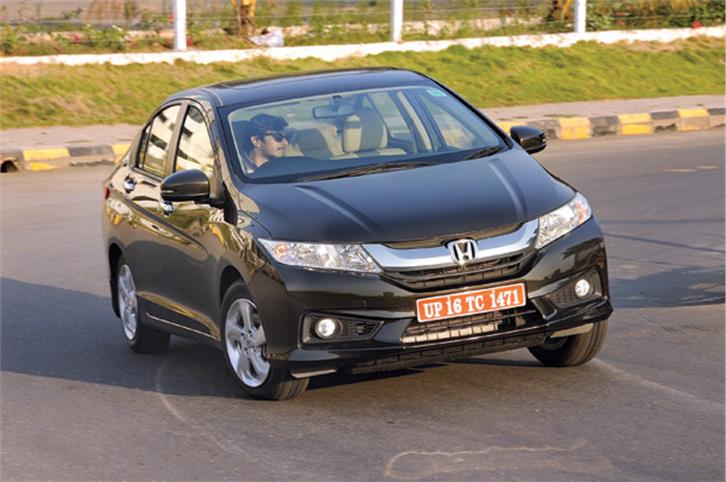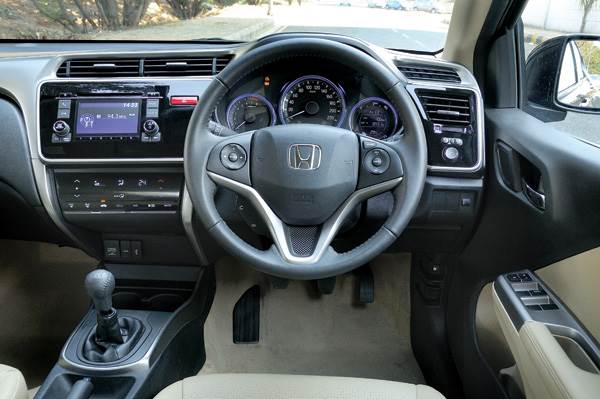How much of a leap forward has Honda taken with the all-new City? Here's our comprehensive road-test review.
The cabin is where Honda has really focussed its efforts, and with good reason. The Verna, which has been dominating the segment of late, woos buyers with its well-equipped interiors, and this is the Hyundai’s key selling point. But with the new City, Honda is ready to beat its key rival at its own game. The equipment list is long, and includes four 12V power sockets, keyless entry and go, a sunroof, cruise control, steering-mounted controls, electric folding mirrors and a rear AC vent as standard on the top-spec VX version. All variants get ABS, EBD and at least one airbag as standard (higher trims get two), and it doesn’t stop there.
Nestling oneself into the new City’s cabin is a pretty pleasing experience. The first thing that comes to mind is just how incredibly comfortable the driver’s seat is. Immediately, your shoulders will love the soft supporting bulges in the seat back. Then there’s the generous seat cushion that gives you the feeling of being in a car that’s at least a segment above. In fact, Honda tried a lot of different seat foam densities and we feel the end result is just right. And interestingly, the softer foam lets Honda get away with a stiffer suspension setup on the new City.
The driving position is a bit ‘stretched out’ and slotting the gear lever into first requires a bit of a stretch too. A slightly lower cowl and a reach-adjustable steering wheel would have been ideal, but it isn’t a deal breaker. With a bit of experimentation, you can settle into a comfortable driving position.
The technical looking instruments are very easy to read both in the day and at night. You may want to turn down the brightness though, because the neon blue rings that flank the dials can be annoyingly bright at night. Drive with a light foot and these blue accents turn green to reward you. A bit gimmicky we think, but no doubt many owners will love this bit of bling. As for the dashboard, a large silver ‘T’ forms the core of the new design and, against the black dash, it looks aesthetically pleasing. However, the overall design has a bit too many elements vying for your attention and lacks a cohesiveness or simplicity we would have liked.
Recessed into the large central piano-black surface is a five-inch LCD screen (lower trims get a 3.5-inch screen) that acts as the multimedia centre and reversing camera screen (the camera gets three viewing angles). We’ve criticised the previous City’s lack of automatic climate control and Honda has hit back with a touch panel-operated system – a segment first. While the interface does look fantastic and a tad sci-fi inspired, the downside is that you need to take your eyes off the road to operate it. Submitting to customer feedback, the audio player now sees the return of a CD player. Additionally, it supports all contemporary audio formats through USB and Bluetooth telephony. However, while you can either answer or end calls via the buttons on the wheel, cycling through the contact list or even redialling requires you to use the multimedia interface and hence take one hand off the wheel. Another letdown is that the expansive piano black surface scratches very easily and may not look as pleasing after a few months.
Honda’s packaging prowess is best experienced at the back. You’ll find an incredible amount of knee room here and again, in a blind test, the soft and comfy cushions could trick you into thinking you’re in a luxury car. The back seat is good for three people, thanks to a flat floor and wide cabin, which according to Honda is 40mm wider. However, headroom is surprisingly limited and taller folk will find the roof too close. Also, the small fixed headrests won’t really protect you from whiplash injuries.
Apart from the extended wheelbase, the trick to all this extra space is that an all-new electric power steering system frees up space in the front, while the rear parcel shelf has been moved upward to release a few more inches both in the cabin and the boot, although this severely hampers rear visibility. As for the boot, the 510-litre capacity is the best in the segment, but the load lip is a touch high.












Comments
Member Login
Personal Details
No comments yet. Be the first to comment.